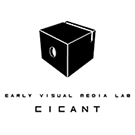A Short History of the View-Master [EN]
Margaret Hanke
In the fifty years after its public debut in 1939, the View-Master offered a popular means of seeing pictures. Like its stereoscopic predecessors, the View-Master exploited the phenomenon of binocular vision in order to produce three-dimensional images. Unlike the devices that came before it, the View-Master utilized 16- millimeter Kodachrome slide transparency film that was illuminated by two small, translucent windows in the rear of the device. Images were mounted onto a reel in pairs of seven and rotated through the View-Master with the aid of a lever. By the 1960s, the View-Master became a popular toy in the United States and is best remembered today for its vibrant glimpses of far off destinations, wonders of the natural world, a long catalog of Disney films, cartoons, and other subjects ranging from the educational to the pop cultural.
As a scholarly subject, the View-Master offers a largely overlooked link between studies on popular nineteenth century 3-D imaging technology and virtual reality. This paper concentrates on an obscure episode from the View-Master’s early history. Invented by William Gruber in 1938, the View-Master’s emergence coincided with the onset of World War II in Europe. Its commercial launch was buttressed by a large purchase in 1941 by the US Military, who used the View-Master as training tool for naval aviators. Dubbed “Stereoscopic Range Estimators,” the View-Master’s military reels pictured aircraft in flight and functioned as an early form of flight simulation. As the View-Master was implemented as an aid to military surveillance, its German-born inventor was simultaneously put under surveillance by the Federal Bureau of Investigation (FBI) for his affiliation with the Nazi party in Germany. These surprising revelations about the View-Master’s early history expand our understanding about the complexity of the 3-D image’s utility as an object of play, simulator, and surveillance tool.
Margaret Hankel is a doctoral student at Bryn Mawr College in the History of Art department. She specializes in the history of photography, modern and contemporary art, and new media. She earned an MA degree in Art History from the University of Georgia in 2017, and a BA in Art History from Columbia College Chicago in 2009. Her dissertation research focuses on the history of stereography in the twentieth century and the use of 3-D technologies in contemporary art practices. Other research interests include the intersection of art, gaming, and the theory of play, as well as the technological development of color photography across both analog and digital media—from early color experiments in the nineteenth century to the use of LCDs today. Before pursuing graduate studies, she worked as a freelance photographer and archivist in Chicago, IL.
Organization


Partners





Campo Grande, 376, 1749 - 024 Lisboa | Tel.: 217 515 500 | Fax: 21 757 7006
Copyright © 2021 COFAC. Todos os direitos reservados. Gestão de conteúdos por Producao Multimédia
